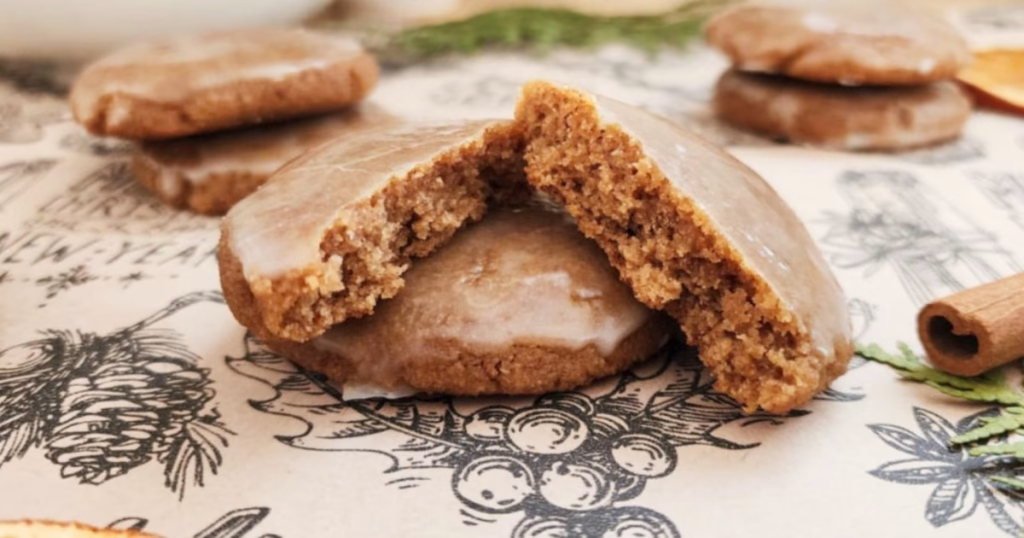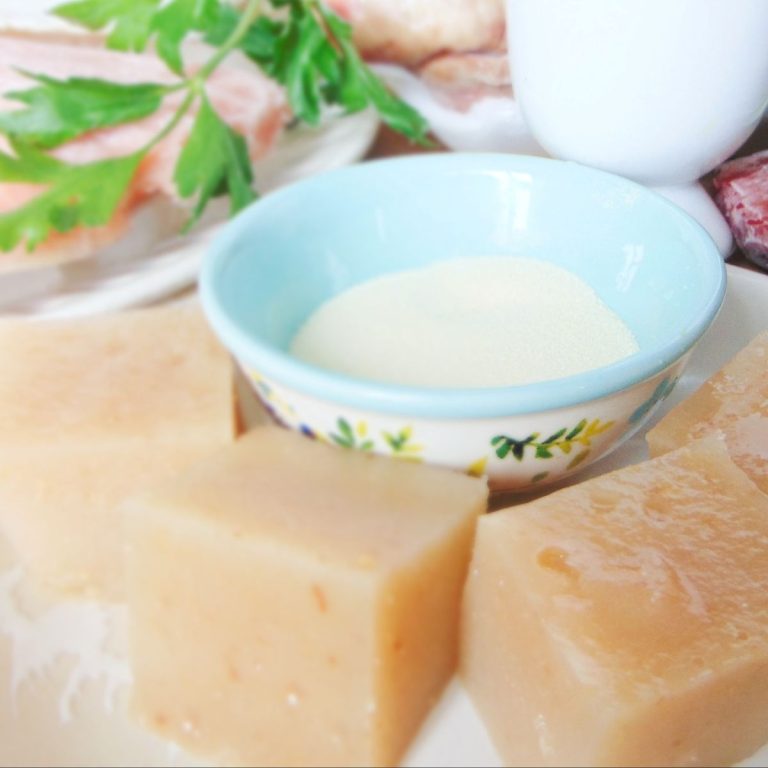Curious about coconut flour? Here’s everything you need to know, from its unique benefits and baking quirks to my favorite tips and go-to recipes. Whether you’re grain-free, gluten-free, paleo, or keto, or just love trying new ingredients, this guide will help you bake delicious treats with coconut flour any time you want.

Disclosure: as an Amazon Associate, I earn a small commission from qualifying purchases at no extra cost to you. Read my full Disclosure and Policy here.
When I first went grain-free and started searching for healthier alternatives to baked goods, I tried all sorts of options. Coconut flour was a pleasant surprise, and one that stuck with me.
A few years ago, when coconut flour and alternative baking weren’t nearly as popular, it was hard to find good recipes that used only coconut flour and wholesome, simple ingredients. So I started experimenting and developing my own healthy coconut flour recipes. At first, it was a bit tricky, but with practice I got better!
In this post, I’m sharing everything I’ve learned: the benefits of coconut flour, all my baking tips and tricks, why I love baking with coconut flour, and my favorite go-to recipes.
What is coconut flour?
Coconut flour is a flour made from dried and finely ground coconut meat. Basically, you extract the meat from a whole coconut, separate the milk and oil, then dry the leftover coconut meal and grind it into fine powder.

Coconut flour is a fine, dry, creamy white powder with a coconut smell and flavor. It can be used for baked goods like cakes, muffins, but even pie crusts, cookies, breads, and savory recipes.
Baking with coconut flour is very different than baking with wheat flour, or any gluten-free flour. The main characteristic of coconut flour is that it soaks up a lot (like a lot!) of liquid, it’s like a sponge! So recipes need to be adjusted significantly by reducing the amount of flour and increasing the amount of liquids.

If you’re new to baking with coconut flour, I highly recommend starting by following some true and trusted recipes like the ones in my grain-free desserts section. Once you get a good hang of it, then you might be able to come up with your own recipes and swaps.
Is shredded coconut the same as coconut flour?
No! Shredded coconut or coconut flakes are dried and flaked coconut flesh (without removing the milk first). The most obvious difference is the texture: shredded coconut is not as fine as coconut flour. It also has higher moisture and fat content and a stronger coconut flavor.
Shredded coconut is great for making macaroons, coconut balls, bars, pies, or for decorating desserts. However, it’s not typically used to replace flour in baking.

What are the best brands of coconut flour?
I pretty much use Bob’s Red Mill organic coconut flour for most of my recipes. I’ve tried other brands, but the results can vary quite a bit. That’s why I stick to one brand, so I can count on consistent results without needing to tweak the recipe every time.
Where can you purchase coconut flour?
Coconut flour is becoming quite popular, and most grocery stores carry it. You’ll usually find it in the organic or natural food section, or sometimes in the baking aisle.
You can also easily order your coconut flour through Amazon (find my favorite brand here), or from online grocery stores such as Thrive Market.
How should you store coconut flour?
Coconut flour doesn’t need refrigeration, but it should be kept in an airtight container to prevent it from absorbing moisture from the air. You can keep it in its original bag as long as it’s sealed well (Velcro or tightly rolled), or you can transfer it to an airtight container.
What are the benefits of coconut flour?
There are several benefits of using coconut flour over other flours:
Coconut flour is naturally grain-free and gluten-free
That’s the biggest perk for those avoiding grains or gluten.
Coconut flour has lower calories and carbs
Compared to wheat flour and many gluten-free flours, coconut flour generally has fewer calories and carbohydrates. That’s especially true considering how much less you use in recipes.
It also has a lower glycemic index, so it won’t spike blood sugar as much as other flours. This is great for maintaining a healthy metabolism, losing weight, or managing diabetes.

Coconut flour has a very high fiber content
Coconut flour is rich in insoluble fiber, which is what makes it so absorbent. Fiber also helps lower the glycemic index and supports gut health and potentially reduces the risk of colon cancer (source).
Coconut flour has healthier fat profile than nut flours
Coconut flour is overall low in fat, and the fat it does contain is mostly saturated fat. It’s specifically high in Medium Chain Triglycerides (MCTs), which may support metabolism and reduce inflammation. Plus, it’s much lower in inflammatory polyunsaturated fats (like omega-6s) than almond or other nut flours.
Coconut flour has more proteins than wheat flour
This is particularly true considering that baked goods made with coconut flour require more eggs.
Coconut flour is a good source of vitamins and minerals
Compared to other flours, coconut flour is a good source of potassium and iron, as well as some B vitamins.
Coconut flour is a lot more affordable
Compared to almond flour, other gluten-free flours, or even high-quality all-purpose flour, coconut flour is usually more cost-effective. Especially since you use much less of it. I typically use between 1/2 to 1 cup for cakes or cookies, which is 2 to 4 times less than what you’d use with other flours.
A CAD $7 453-g bag of coconut flour can make up to 6 recipes, which comes out to just over $1 per recipe. Compared to King Arthur Organic All-Purpose Flour or Bob’s Red Mill Almond Flour, coconut flour is 8–9 times cheaper per recipe!

How to bake with coconut flour
You can substitute coconut flour for wheat or other flours in many recipes, but it’s not a 1:1 swap.
Because it’s so absorbent, you need far less coconut flour. You’ll also need more eggs and usually more baking powder.
General rules for baking with coconut flour
There’s no one-size-fits-all formula, but here’s a good starting point:
- Reduce the flour to one-fourth: If a recipe calls for 2 cups of flour, try 1/2 cup coconut flour.
- Increase eggs 2 to 2.5 times: If a recipe calls for 2 eggs, use 4 or 5.
- Slightly increase baking powder: Add about 1/4 tsp more.
From there, adjust based on how the batter looks. If it’s too thick, add more liquid (milk, oil, eggs) one tablespoon at a time. If it’s too thin, add more coconut flour a tablespoon at a time. Remember: coconut flour batter should be slightly thinner than one made with wheat flour. Practice helps!

Tricks for baking with coconut flour
- Weigh it: If the recipe gives gram measurements, use a scale. A few grams can make a big difference.
- Sift it: Sift the flour to prevent clumps.
- Let the batter rest: Let it sit for a couple of minutes so the flour absorbs all the liquid before adjusting.
- Whip egg whites: For fluffier baked goods, separate and whip the egg whites to soft peaks, then gently fold them in.
Can coconut flour be mixed with other flours?
Yes! Mixing it with other flours like almond flour often improves texture and flavor.
Personally, I consider myself a bit of a coconut flour purist and I love to develop recipes that use coconut flour only. Finds all the reasons why I love baking with coconut flour so much right below!

Why I love baking with coconut flour
Now that we’ve seen all the benefits and tricks to bake with coconut flour, let me tell you why I love it so much that it became a staple in my kitchen and, most of the times, the only flour in my pantry!
Coconut flour is one of the healthiest and less processed baking flours
As an health enthusiast, of course, my favorite thing about coconut flour is that it’s a healthy choice for baked goods. This way, I can feel good about serving my family delicious desserts that are good for them!
We’ve been mostly following a grain-free diet, which is beneficial for us in so many ways (find out more about it here), and we also like to eat a high-protein, high-fat, low-carb Primal Diet. Coconut flour is a great choice for that as it’s naturally grain-free and low in carbs.
I love that coconut flour has fewer calories and fats than nut flours, so that my desserts are lighter and not quite as filling (or you can just eat more of them, whatever way you want to look at it).
Compared to other flours, coconut flour is also less processed, which is quite a bonus for me! Compared to wheat flour, for example, coconut flour goes through fewer steps to be made and doesn’t have any additives (such as artificial vitamins, bleaching agents, or preservatives commonly found in wheat flour).
Coconut flour is also a healthier alternative to almond flour for different reasons. For example, conventional almond flour can contain high levels of pesticides (such as glyphosate and propylene oxide) and are pasteurized. Even organic almond naturally contain high levels of oxalates (antinutrients), other toxins (such as cyanogenic glycosides), as well as high levels of Omega 6 fats, which can cause inflammation.

Coconut flour is an inexpensive grain-free alternative
As a frugal person in a one-income family, I love how affordable coconut flour is! A bag of coconut flour lasts me for weeks, and it only cost me CAD $7, a lot less than any other flour of comparable quality (see my cost breakdown above). For example, I was for a while into making sourdough, but I was soon out down by how much flour you need to make sourdough and how much a good quality organic wheat flour can cost!
Coconut flour has a lovely taste
Coconut flour has a mild coconut flavor that works very well in most sweet baked goods. It also has a mild natural sweetness that allows me to decrease the amount of sugar I use in my recipes, making them even healthier!
Coconut flour recipes use up lots of eggs
Let me tell you how much I love eggs. Eggs are such a great source of proteins, healthy fats, and so many vitamins and essential nutrients! You can never eat too many eggs. I love that my coconut flour recipes use lots of eggs, making my desserts higher in proteins and nutrients.
Now that we have also added a flock of chickens to our homestead, I love baking with coconut flour even more, since we have so many eggs to use up!

What diets or eating plans is coconut flour good for?
Coconut flour fits into many diets: grain-free, gluten-free, Paleo, Keto, Primal, and even diabetic-friendly eating.
You can adjust ingredients for your baked goods to adapt your recipes to your specific needs and preferences. For example, for keto recipes or if you have diabetes, you might want to avoid sugars and use other sweeteners, while if you follow a paleo diet you should avoid dairy products.
I like to use wholesome, natural and simple ingredients for my recipes. Lots of eggs, butter (or coconut oil for a paleo-friendly version), natural sweeteners like honey or coconut sugar.
Disadvantages of coconut flour
Even though I truly love baking with coconut flours, there might be some downfalls for some people and uses:
High content of fibers and FODMAP
Even though eating plenty of fibers is usually considered healthy, some people might be sensitive. For example, if you suffer from IBS (like myself) fibers might cause digestive issues and discomfort. Same goes for the high content of FODMAPs in coconut flour.
From my personal experience, since recipes use small amounts, it’s usually well-tolerated unless you eat a large quantity, especially with dense baked goods like cookies or pies.
Coconut taste
Even though coconut flour doesn’t have a extremely strong coconut flavor like shredded coconut or coconut oil, you can still taste it. In most sweet recipes, it blends nicely. But if you dislike coconut, try recipes with stronger flavors like chocolate, citrus, or other ingredients. Try for example this delicious chocolate cake or this indulgent carrot cake, where you can’t taste the coconut at all!
Personally, I’m not a big fan of it in savory recipes like breads or crepes. Some people add garlic powder or herbs to mask the flavor, that might help!
Coconut flour is not the best for all applications
While I love it for cakes, muffins, and brownies, some recipes are trickier. Cookies, for example, are harder (but not impossible) to get just right and they can turn out dry or too soft. If you want to try some true and tested coconut flour cookies, I have a few recipes like these gingerbread cookies, these ladyfingers perfect for grain-free Tiramisu, and my favorite: coconut flour Lebkuchen cookies, perfect for your grain-free holiday baking!

And as mentioned, the coconut flavor can be off-putting in some savory applications.
Coconut flour is not “local”
Living in Canada, coconuts certainly don’t grow around here! For someone who likes to prioritize local, in-season foods, that can feel like a downside. But for me, it’s all about balance. I source most of our food locally and seasonally whenever possible. Coconut flour is only a small part of our diet, not something we eat at every meal, so I’m okay with making an exception for something “exotic” when the benefits outweigh the cost.
Find my collection of coconut flour grain-free desserts
Easy, beginner-friendly coconut flour treats
Coconut Flour Brownies (Grain-Free, Gluten-Free)
Coconut Flour Apple Bread (Grain-Free, Gluten-Free)
Coconut Flour French Apple Cake (Grain-Free, Gluten-Free)
Coconut flour cookies
Coconut Flour Gingerbread Cookies (Grain-free, Gluten-free)
Grain-Free Lebkuchen Cookies with Coconut Flour
Easy Grain-Free Ladyfingers with Coconut Flour
Show-stopping coconut flour desserts
The Best Healthy Grain Free Chocolate Cake
Healthy Grain-Free Carrot Cake with Cream Cheese Frosting
The Best Grain-Free Italian Style Tiramisu
Coconut Flour Gingerbread Cake (Grain-Free, Gluten-Free)
Lemon Cake with Coconut Flour (Grain-Free, Gluten-Free)
More coconut flour recipes
Coconut Flour Pie Crust Recipe (low-Carb, Grain-free, Gluten-free)
Cinnamon Roll Cake with Coconut Flour (Grain-free, Gluten-free)
Fruit and Chocolate Christmas Cake with Coconut Flour (Grain-free, Gluten-free)
Pumpkin Swirled Chocolate Loaf (Grain-free, Gluten-free)
If you also like baking with coconut flour and want to share your experience, or have any questions, drop me a comment down below, and don’t forget to share this posts and recipes with your friends!
Pin it for later








This is super helpful and informative! I have not used alternative flours in baking, but I’d love to try baking with coconut flour, since I heard so many good things about it. I think I found the right place to start right here on your website. You sound very knowledgeable and have a lot of delicious recipes listed, like that tiramisu, yumm! Can’t wait to try some.
Thank you, Heidi, and let me know how you like coconut flour when you try it!